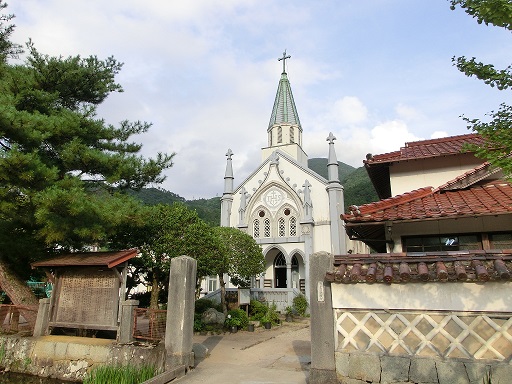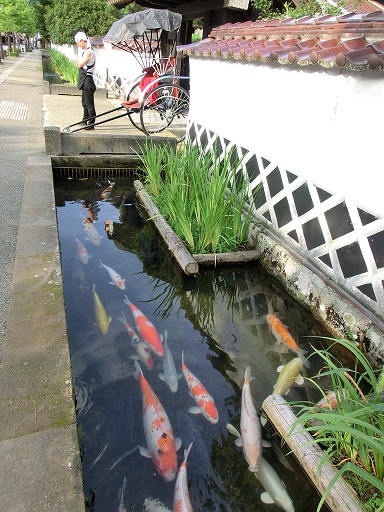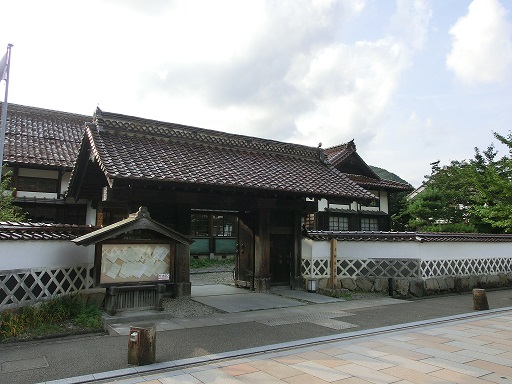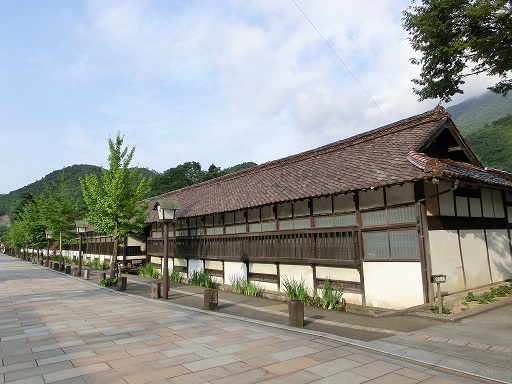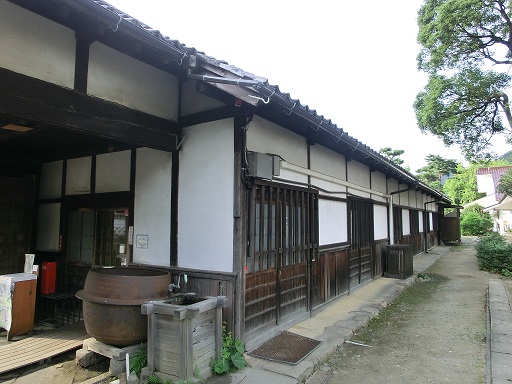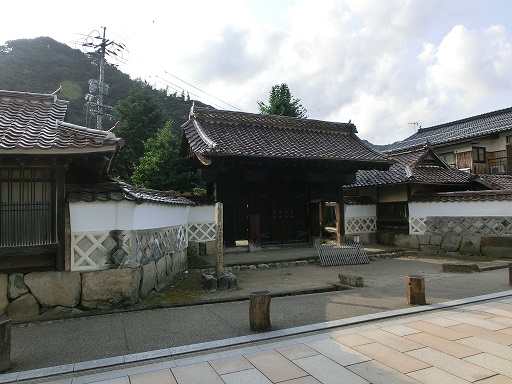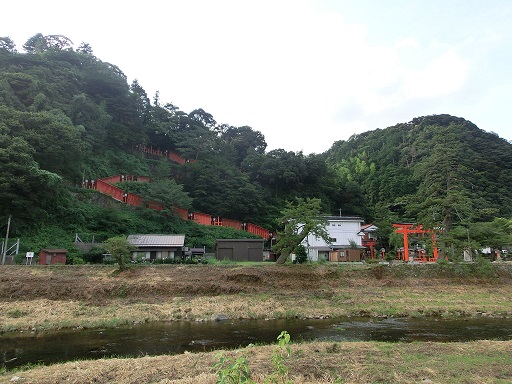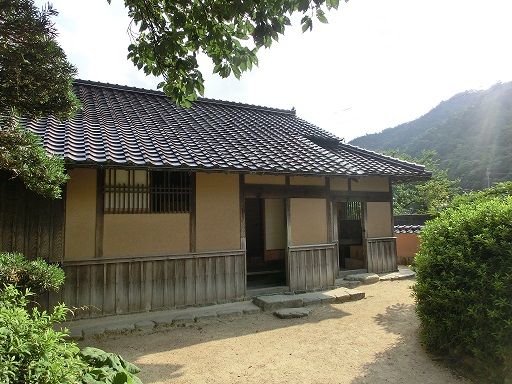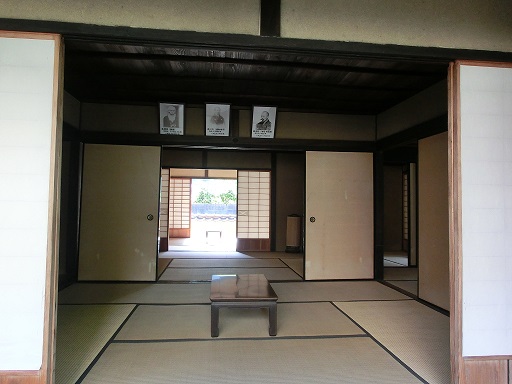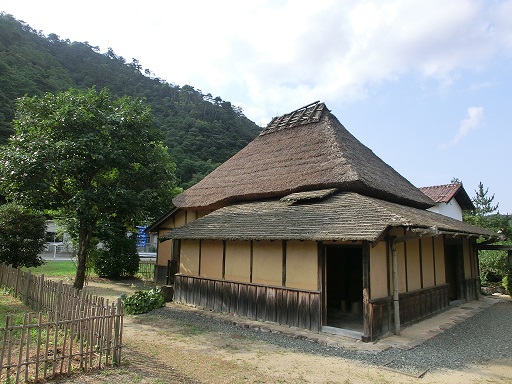The above-left picture shows Kawada Residence and the above-right picture shows Zaima Residence.
These houses were built in the late nineteenth century.
To the south from these houses, Catholic Tsuwano Church is located. The church was founded in the late nineteenth century.
In Japan, the Christianity was introduced by Francisco de Xavier in 1549, at the end of the Muromachi Age
.
Christians were forced to converted to Buddhism, but many of them became crypto-Christians through the Edo Age.
In 1857, crypto-Christians were fond in Nagasaki and 125 of them were sent to Tsuwano. They were put to torture. Thirty-seven of them were martyrized.
Catholic Tsuwano Church tells this history.
To the south from Catholic Tsuwano Church, it used to be the districts where retainers of Tsuwano Feudal Domain, "Samurai" lived. The street was the main street in the Edo Age. The white cray walls continue along the main street.
A rickshaw man was standing in front of a residence. He seemed lost in meditation.
Red crepe flowers and his figure were very impressive.
Koi fishes were swimming in the roadside driving channel.
limpid stream flows in the driving channel.
On the other side of the main street, the main gate of "OOKA residence" is located. OOKA clan were the chief retainers of Tsuwano Feudal Domain during the Edo Age. Tsuwano Town office is located at the site of OOKA residence, shown in the below-right picture.



